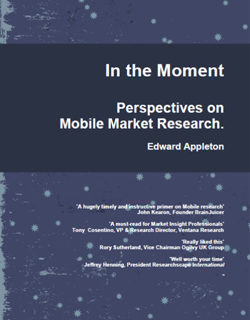Fred John
A man was walking down a dusty country highway. He was not really sure what had led him to start his journey—perhaps boredom or a sense of feeling unfulfilled—nor even what he was looking for. “I’ll know it when I find it,” he told himself. The road was not well traveled, so most of the time he simply observed his surroundings or lost himself in his own thoughts.
The route was windy, with ups and downs, but not particularly scenic. Much of it ran through fairly barren fields filled with scrub grass and marred with the occasional piece of litter. At other times, it passed through pastureland or woods. The man longed to rest in the shade of these forest glades, but there were no picnic tables or even inviting rocks to sit on. So he kept on walking.
One day he came to a large factory with huge smokestacks puncturing the sky, although the smoke was less putrid than what he remembered from his youth. He passed through the iron gates and asked the foreman if he could have a tour. The foreman was proud of his facility and happy to take the man around. He showed off the incredibly expensive machinery, explaining in great detail the complex production systems, and how they met all the latest safety and environmental regulations. As the foreman ran on and on, the man’s interest began to fade and his mind turned off. He thanked the foreman and resumed his journey.
A few days later the road passed through ploughed fields, and soon the man saw a large farm with barns, silos, and a few tractors. He went up to the farmhouse and rang the bell, hoping the door would be opened by the legendary farmer’s daughter, but it was the farmer himself who let him in. He, too, was pleased to show off his place, and led the man through barns and sties, up ladders to haylofts and down again and into the henhouse, and across acres of fields dedicated to a various crops.
The whole time he spoke, explaining the life-cycle of each animal, the time from seed to harvest of various grains and vegetables, the price of seed and hay, market fluctuations and government support policies, and the problem with finding cheap labor at harvest time. Before long the man was exhausted, and not just with the rigours of the visit. Declining an invitation for an early (and bountiful) supper, he continued down the road.
As he rounded a bend, he came across a county fair filled with happy, boisterous people of all ages enjoying carnival rides, games, and eating contests. He watched in fascination as children and adults drove their bumpy cars around in circles with the main goal of knocking against everyone else. Clearly, everyone was having fun, but to the man it felt like purposeless hilarity, and he couldn’t join in; it just did not fit his temperament. And so, with some regret and no cotton candy, he left.
Now the houses started to cluster a little closer to one another, and the man found himself in a small town. Walking down the one-block main street, he caught his face in a plate-glass window, and realised he badly needed a haircut and shave. He found a barbershop and was soon resting in a comfortable chair, the focus of attention of the town barber. As he worked, the barber entertained his only customer with a constant stream of anecdotes describing the comings and goings of the little town.
How old Judge Greene, who for years had had his hair cut once a month, had decided to protest a freeze on judicial salaries by postponing his visits to the barber. First he skipped one month between cuts, then two, then three and so on until his hair was down to his shoulders. But rather than raise his pay, the town had petitioned to have him removed from the bench for his unseemly appearance. And how a competing “unisex” hair salon had opened briefly down the street but was boycotted by most of the locals who assumed it was some kind of sex parlour, and proved to be a disappointment to those few who had gone there with the same misunderstanding.
The stories were indeed quite engaging and the man was sorry when he had to leave. But as he walked out of town, he realised he knew no more about the situation of small town barbers than when he went in.
He was back in the country again, but now surrounded by trees, and the air was cleaner. A brook ran alongside the road. An arched, wooden sign marking a turnoff announced a summer camp. He asked the camp director if he could look around, and was told he was welcome to do so, and stop back if he had any questions. At the edge of a field he found some teenagers building a trail through the forest. The boys and girls cheerfully demonstrated their cutting and digging tools, and then described in more detail what their task was all about.
The path would lead to a lake a few miles away. Their job was to make the journey both as safe and engaging for the walker as possible. Safety was easy. Making it an enjoyable walk took much more thought—requiring frequent changes in flat and hilly terrain, different ecosystems, and providing a few views along the way.
The man then watched some younger kids building a canoe. Again, they were proud to show their skill handling a box full of tools, but became much more animated when they spoke about how they were going about their craft. “We start with a model used by the local Indians centuries ago,” one girl explained. “But we have to modify it. After all, for the Indians, canoes were the primary means of transportation, for moving cargo and carrying war parties. Today, they are mainly used for fun by amateurs, so size, weight, and buoyance have to be considered differently.”
The man then entered the large dining hall, and spoke to the chef. “Cooking for 80 hungry kids, I follow two rules—I have to have fun preparing the food, and they have to look forward to eating it. Since I control the kitchen, I can keep myself entertained by experimenting.” He offered the man a slice of mushroom pizza which he just added to the menu. “But getting them to like it is the real challenge. The food needs to be nutritious but tasty. If not, they’ll just go out and buy junk food.”
The man gratefully accepted the invitation to stay for dinner, and returned to the camp office with a lighter step than he’d had in weeks. He told the director how impressed he was with the place and the infectious enthusiasm of the campers, and how much he’d learned in just a few hours.
“Do you need any help building trails?” the man asked. The director grinned and took out a map.
* * * * * *
This piece emerged while wondering where B2B research is today and where it is headed. While the immediate impetus was my involvement in the upcoming ESOMAR B2B Forum, the questions are ones I’ve grappled with over the years. This whole category of marketing research has always been somewhat of a stepchild in the profession, and its origins as “industrial research” or “trade research” haven’t helped improve its image. Nor has it necessarily caught up with developments in the consumer arena. At the same time, I’m convinced that B2B marketing, and B2B research, are fundamentally different from their consumer counterparts. What this branch of inquiry needs is not just an image make-over, but a radical transformation that addresses contemporary business needs with new approaches while retaining its core distinctiveness.
The journey ends in a place where ends take priority over means, and where purpose takes into account form, function, and an understanding of the customer, for whom psychological factors are as critical as rational features.
Fred John is Vice-President of ESOMAR, Programme Committee Member of the ESOMAR B2B Forum 2014, and Founder and Principal of Consilience Research & Consulting, LLC.
The call for speakers for the ESOMAR B2B Forum 2014 is now open. To get involved head over to the ESOMAR event pages to find out more.


